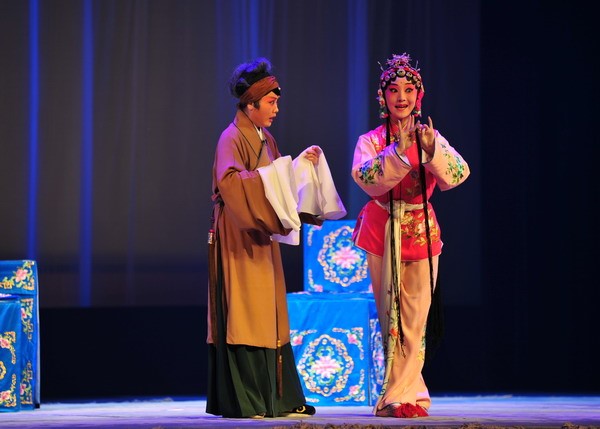Introduction of Hunan Kunqu Opera

Kunqu Opera has been over six hundred years ago, which is the three most ancient drama in the world with ancient Greek tragedies and India Sanskrit dramas.The ancient Greek tragedy and Indian Sanskrit were annihilated in the history, but the Chinese Kunqu Opera remained alone. On May 18, 2001, the Chinese Kunqu Opera Art was approved by a unanimous vote and declared by UNESCO as the first batch of the "Representatives of oral and intangible heritage of humanity". Kunqu Opera has rich and colorful repertoire, magnificent and elegant diction, elegant melody, exquisite performance, singing and dancing, martial arts and crafts, rich in poetic connotation, painting elegance, poetry, music, dance and drama, and occupies an important position in the history of Chinese literature, opera, music and dance history, which is the best performing system that embodies the lyric, freehand, symbolic and poetic characteristics of Chinese traditional aesthetics. Because Kunqu Opera had a far-reaching and direct influence on later Peking Opera and many local operas, it was called "the ancestor of all kinds of operas" and "the teacher of all kinds of operas", with high artistic and academic value. Kunqu Opera has a high reputation among the world's arts, and many European and American scholars call it the most representative of oriental art.
Hunan Kunqu Opera is one of the traditional operas in Hunan province. It is the same as the Suzhou Kunqu Opera and Northern Kunqu Opera. It is also called Guiyang Kunqu because it is popular in Guiyang, Jiahe, Xintian, Ningyuan, Lanshan, Linwu, Yizhang, Chenxian, Yongxing, Changning and other places in the south of Hunan Province, and also takes Guiyang as its development and activity center. As early as the Ming Dynasty in Wanli years, one of the main operas of Chinese opera, Kunshan Opera was introduced into Hunan Province, which had a great impact on the development of Hunan traditional opera. So far, Hunan's Hunan Opera, Qi Opera, Baling Opera, Chenhe Opera, Jinghe Opera, Wuling Opera and other major local drama have also retained a lot of repertoires and opera cards of Kunqu Opera.
After the founding of new China, the party and government attached great importance to the development of Hunan Kunqu art. With the advocacy of Mei Lanfang and Tian Han, Hunan Kunqu Opera was restored and developed, forming an independent and complete local opera. In 1956, the government organized the old artists to develop the art heritage of Hunan Kunqu Opera. In 1957, the Provincial Culture Bureau organized the Hunan Kunqu Opera training class, and trained the first group of Hunan Kunqu art talents after the founding's Republic. In 1960, the Chenzhou Kunqu Opera Troupe was established to revive a dying drama.Comrade Tian Han praised the achievements of Hunan Kunqu Opera with the phrase "flying phoenix in the mountains". After several evolutions, the troupe was named Hunan Kunqu Opera Troupe. Since 1960, it has sorted out and performed a number of traditional repertoires such as "The Story of the White Rabbit", "The Peony Pavilion", "The Story of Huan Sha", "Kite Error", "The Peach Blossom Fan" and "The Jade Hairpin". Among them, the "Wusong Killing Sister-in-law", "The Purple Hairpin" and "Suxianling Legend", as well as a new story-telling drama, won the prizes in the provincial performances. According to the needs of expressing contemporary life, they have made some bold explorations and attempts in the innovation and creation of Hunan Kunqu art, and created modern plays such as "Tenglong River", "Liantang Opera" and "Beam Fire Journey". After a higher level of training, a group of young actors and musicians have become the Hunan Kunqu art successors in the performance practice, in which the outstanding and young actor Zhang Fuguang, won the Plum Award for Chinese Drama.




